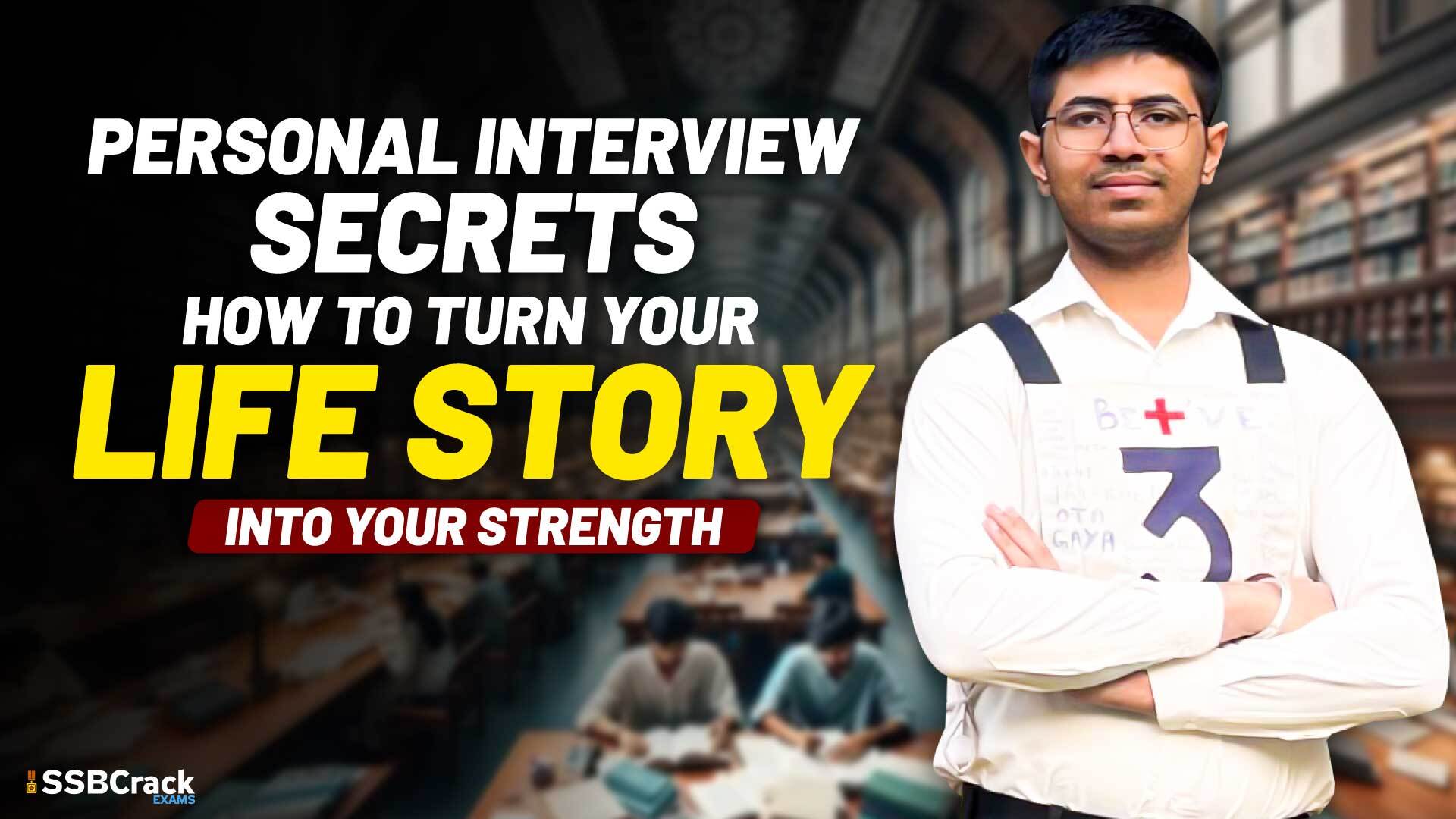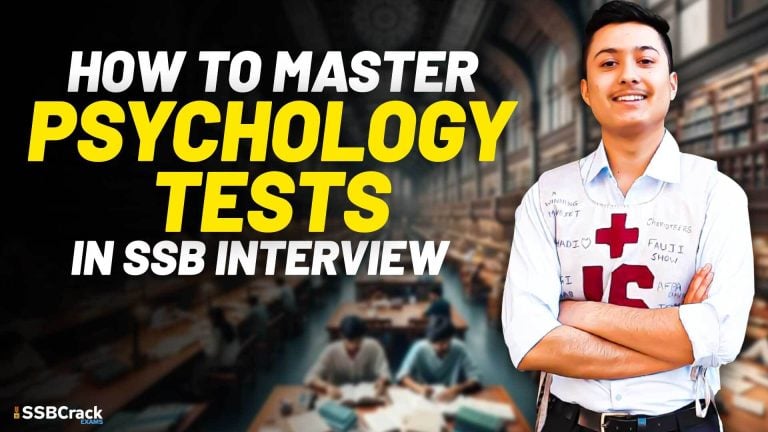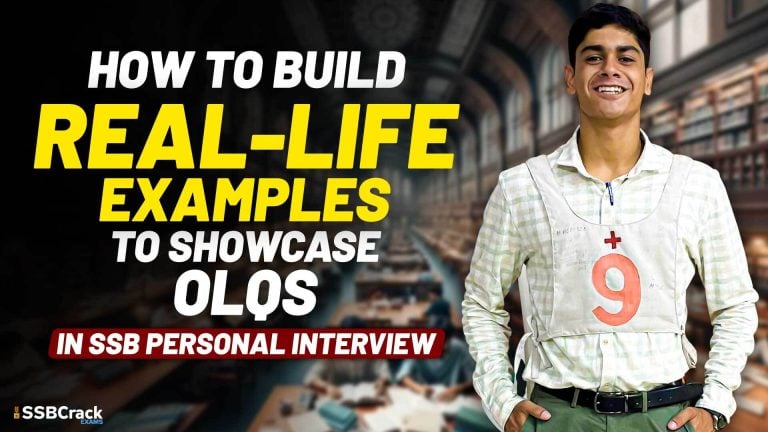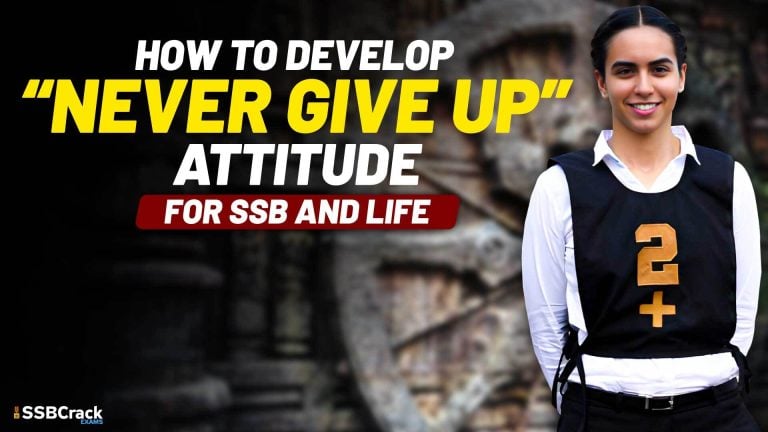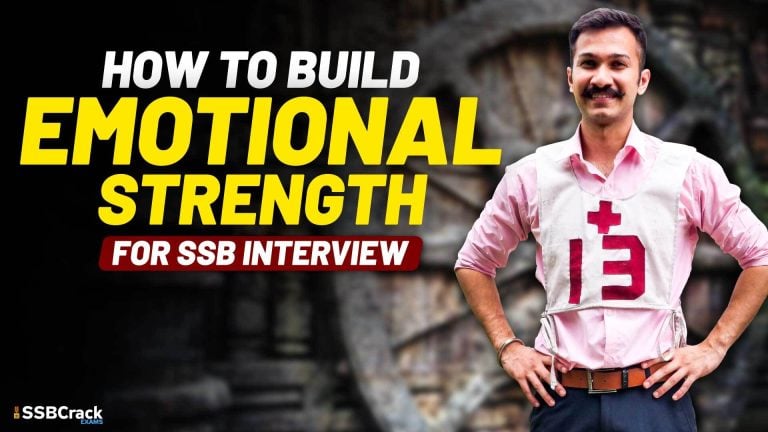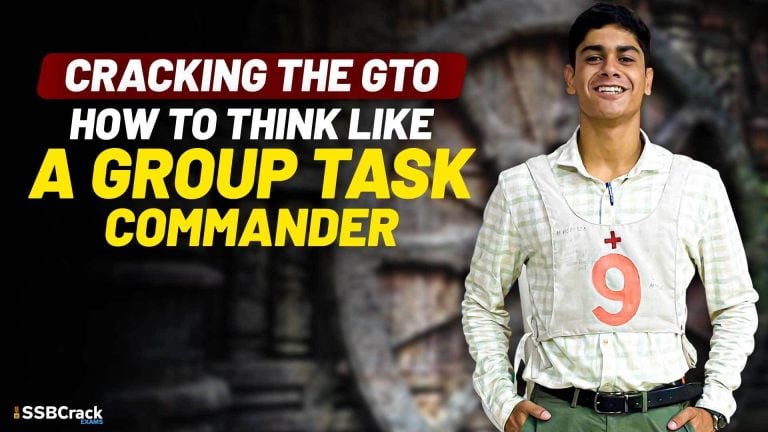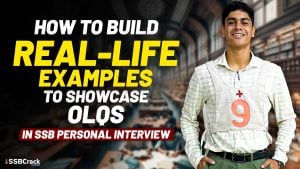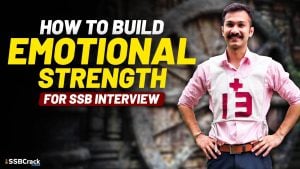The SSB Personal Interview (PI) is not a test of your memory — it’s a test of your mindset, maturity, and self-awareness.
Every candidate walks in with a unique background — school marks, hobbies, family stories, failures, and achievements. But few realize that their own life story is their biggest strength.
The Interviewing Officer (IO) is not looking for a perfect candidate — they are looking for someone who understands their life honestly and can turn even challenges into learning experiences.
In this article, you’ll discover how to transform your everyday experiences into powerful narratives that make you stand out during your SSB Personal Interview.
Understand What the IO Really Wants
The IO already knows your background from your PIQ form. So when they ask questions like:
- “Tell me about your family.”
- “What kind of student are you?”
- “How do you spend your weekends?”
They’re not collecting facts — they’re reading your attitude.
They want to see how you interpret your experiences — are you positive, responsible, and growth-oriented?
✅ Tip: Always frame your life events with gratitude and learning. Even small achievements or failures can show great maturity when presented well.
The Power of Self-Awareness
Before you can impress the IO, you must first understand yourself deeply.
Ask yourself:
- What are the 3 strengths that define me?
- What are 2 weaknesses I am working on?
- What moments have made me resilient or confident?
💡 Self-awareness builds authenticity — and authenticity builds trust.
The IO instantly recognizes when you’re speaking from genuine experience versus rehearsed lines.
Turn Failures into Learning Stories
Every candidate faces setbacks — rejections, poor marks, conflicts, or personal struggles.
But what defines an officer is how they bounce back.
Instead of saying:
“I failed in my first attempt.”
Say:
“I couldn’t perform well in my first attempt because I lacked structure in preparation. I reflected, made a daily plan, improved communication skills, and came back stronger.”
🎯 You just transformed a failure into a story of growth, discipline, and determination.
Use the STAR Formula to Present Your Life Events
To make your life story structured and memorable, use the STAR method:
- S (Situation): What happened?
- T (Task): What was your role/responsibility?
- A (Action): What did you do?
- R (Result): What was the outcome or learning?
Example:
“During my college fest (S), our team’s anchor fell sick last minute (T). I volunteered to host, despite never doing it before (A). I rehearsed quickly and managed to engage the crowd successfully (R). It built my confidence and adaptability.”
This simple method turns your ordinary moments into evidence of OLQs.
Highlight Consistency Between Your Life and Goals
The IO wants to see whether your past behavior supports your dream of joining the Armed Forces.
If you say you’re passionate about leadership — have you led teams before?
If you claim discipline — does your routine reflect it?
Show that your choices, habits, and experiences already align with an officer’s lifestyle.
That’s how your life story becomes your proof of suitability.
Practice Storytelling with Confidence
Don’t memorize answers — internalize your experiences.
Practice narrating them to friends or mentors. Focus on:
- Clarity (no over-explaining)
- Positivity (no blaming)
- Reflection (what you learned)
Remember: the IO is more impressed by honest emotion than by fancy vocabulary.
Conclusion
Your life story is your resume of character — every decision, challenge, and experience you’ve had has shaped the officer within you.
When you enter the SSB Interview room, don’t try to become someone else.
Be yourself — but the best version of yourself: confident, humble, and thoughtful.
Because when your answers reflect real experiences, genuine growth, and clear purpose, the IO sees not a candidate — but a future officer.
“Don’t hide your story. Own it, polish it, and let it speak for your potential.”
